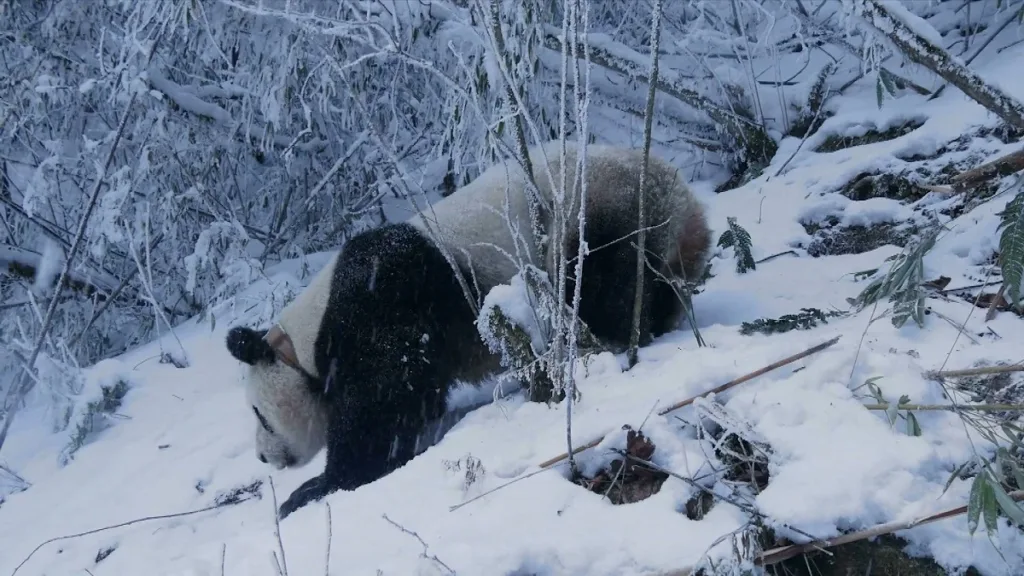China boasts rich resources of rare animals, but due to natural disasters and human interference, the ecosystem has deteriorated, severely shrinking the habitats of some species, including the giant panda, leading them towards endangerment or extinction.
The immediate task is to protect these rare animals and their habitats. Initially, this is achieved by establishing nature reserves and national parks to create new wild habitats for them. Only after these steps is it time to reintroduce them into the wild.
The conservation strategy guided by the International Union for Conservation of Nature (IUCN) follows a similar approach. Once the captive population reaches a certain number, it is necessary to release some captive pandas into the wild to rejuvenate the wild giant panda population. To rescue isolated small populations of giant pandas and change their endangered status, and to ensure the long-term survival of the entire giant panda population, China began implementing the giant panda reintroduction program in 2003.
Objectives of Reintroduction
The primary goals of giant panda reintroduction include:
- Increasing the number of wild giant pandas in small populations to improve their genetic diversity and eliminate the risk of extinction.
- Rebuilding giant panda populations in their historical distribution areas.
- Ensuring the long-term survival of wild giant panda populations.
- Providing a reference for the protective reintroduction of other large mammals.
- Maintaining and restoring natural biodiversity.
- Promoting local and national long-term economic and social development.
- Enhancing public awareness of conservation.
Conditions for Reintroduction
Three basic conditions are essential for reintroduction:
- A self-sustaining and vibrant captive population.
- A research team with fieldwork experience.
- A suitable site for reintroduction training.
Given the current status of giant panda reintroduction, recent explorations have just begun. Regardless of the reintroduction technical route or method, progress must be cautious and gradual.
Captive giant pandas are highly dependent on humans because their habits and characteristics under artificial rearing differ significantly from those of wild pandas, especially in terms of survival skills. Therefore, the most critical aspect of reintroduction is training giant pandas in survival instincts, such as finding bamboo in the wild, locating water sources, interacting with other animals, reinforcing territorial awareness, and avoiding risks. The best approach currently is for experienced wild panda mothers to lead their cubs in monitored wild environments for some time before the cubs are released to integrate into their natural habitat.
Additionally, the conditions of the reintroduction site must be strictly surveyed and understood, including ecosystem integrity, bamboo species and quantity, water source status, human disturbance, and the presence of parasites and microorganisms. Scientifically selecting the reintroduction site, considering trained individuals, bloodlines, and gender, is crucial to the success of reintroduction training and release.
Post-release tracking equipment and monitoring methods must be scientific and effective to minimize harm to the pandas and avoid affecting the reintroduction process.
Progress and Achievements
Since 2003, China has initiated the training and reintroduction research of captive giant pandas. Eleven captive pandas have been reintroduced, with nine surviving, establishing a technical system for giant panda reintroduction training and release. This effort was awarded the First Prize of the Tenth Liang Xi Forestry Science and Technology Progress Award.
In 2017, the China Giant Panda Conservation Research Center pioneered the introduction trial of captive pandas. By releasing female captive pandas into the wild to introduce new genetic material, the genetic diversity of captive pandas was improved, ensuring the stability and healthy development of the captive population. The panda cubs “Hehe” and “Meimei” successfully achieved a Guinness World Record, becoming the world’s first twin giant pandas born and surviving from a captive female introduced into the wild.




